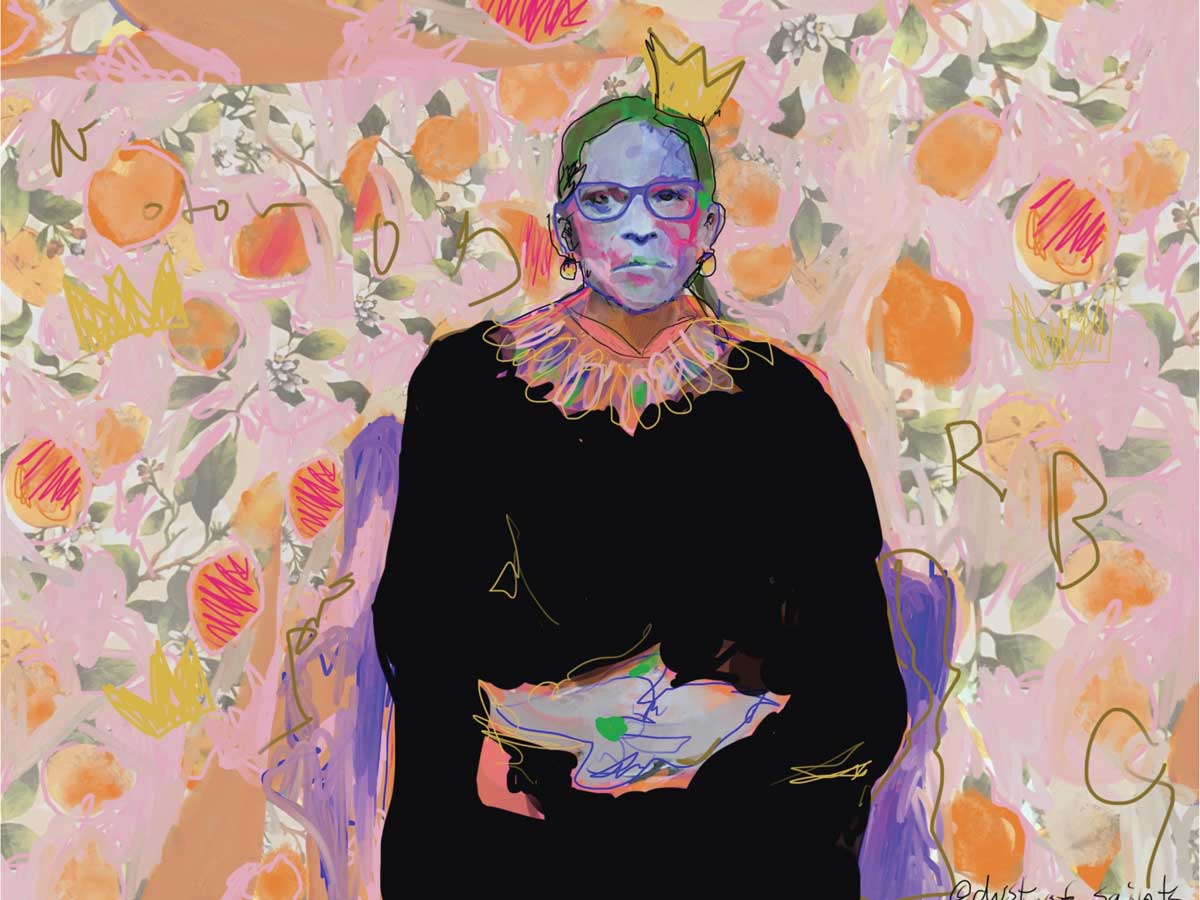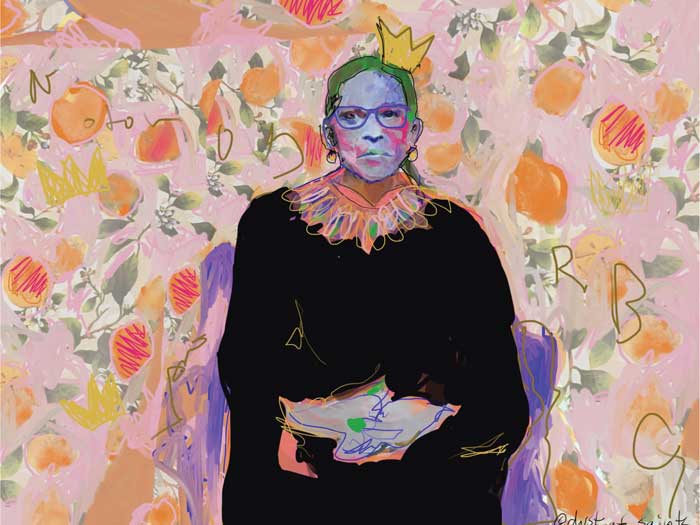
Boom in fine-art rental market an offset of the pandemic
 Pieces like Parveen Dhatt’s Your Husband Works Too could find a temporary home in your living room (Courtesy of Partial Gallery)
Pieces like Parveen Dhatt’s Your Husband Works Too could find a temporary home in your living room (Courtesy of Partial Gallery)
Over the past couple of years, Canadians have had a chance to sit at home and stare at the wall for a good long while. And a growing group of them is becoming more selective about what’s hanging there, staring back at them.
Tammy Yiu Coyne, who co-founded the Toronto-based online gallery Partial, is one of several art dealers who have begun renting more art to private individuals as an affordable alternative to buying. Yiu Coyne says Partial’s online traffic increased by 130 per cent since the start of the pandemic and art rentals more than doubled from 2019 to 2020. The upward trend has continued, with a 43 per cent increase in 2021 compared to 2020.
She co-founded the online sales and rentals business in 2016 with the goal of getting more Canadian art on more walls. Individuals interested in dipping a toe into the world of collecting can browse the gallery’s holdings of works by Canadian artists, both emerging and established. Rental prices range from $25 up to several hundred dollars per month, with purchase prices from $35 to $10,000 (though the majority are in the $750 to $2,500 range).
Customers have the choice of buying a piece outright or renting it by the month for up to three months, with the rental fee going toward the full purchase price if the client eventually decides to buy.
“Diving right in with a purchase can be intimidating,” says Yiu Coyne. “This model allows people to spend time with new art on their walls before deciding whether to buy or not.”
It’s a model that corporate clients looking to decorate offices, waiting rooms, restaurants and film sets have been using for years. Yui Coyne chalks up the more recent expansion of her consumer base in part to the lockdowns, a fact of life that she says has made some of her clients consider more deeply how they enrich their home life. And, while an increase in disposable income due to travel and dining restrictions likely plays a role, too, she believes there’s been a larger shift in values that’s driving the interest in art as much as any other factor.
“People have had time to reflect. They care more about where they put their money,” says Yiu Coyne. “You can buy something on Amazon or you can support an artist in your neighbourhood.”
At North Van Arts in British Columbia, art rental coordinator Florene Belmore naturally had concerns as West Coast offices emptied and film sets shut down at the beginning of the pandemic. The non-profit organization has been renting art since 1969, but mostly to corporate and film industry clients. Yet, as corporate rentals fell off, private rentals and sales surged and the gallery is now generating about 20 per cent more revenue from rentals and sales than before the pandemic, the majority from rentals to individual consumers.
“I think the pandemic downtime created a contemplative mood that led to a greater appreciation for art,” says Belmore. “And think of all the Zoom meetings that needed something in the background.”
At the Art Gallery of Ontario rentals program, the shift from corporate to individual rentals was dramatic. Pre-pandemic, it was roughly a 70/30 split between corporate clients versus private. In the last six months, about 80 per cent of new rentals were placed in residential homes.
“Residential is carrying the revenue right now,” says AGO art rental and sales coordinator Clair Kyle, though she saw corporate rentals beginning to return as the Omicron wave receded.
The Canada Council Art Bank in Ottawa holds some 17,000 contemporary and modern Canadian artworks, all of which can be rented to businesses or branches of government—but not individuals. The council’s art rental program manager Rebecca Huxtable says that, like most businesses and organizations, the Art Bank continues to evaluate new opportunities associated with the future of work.
Despite a downturn in corporate rentals early in the pandemic, Huxtable says, the industry is poised to grow. To entice workers back to an office that many now view as optional, employers are putting more time and money into creating an aesthetically pleasing and healthy office environment.
“Better lighting, quality furniture, plants and original art work are all a part of that,” says Huxtable.
She also sees the art rental model benefitting from the societal shift toward the sharing economy.
“Rideshares, food delivery, co-working—these have all seen an uptick. I see art rental as fitting in there quite nicely,” says Huxtable.
As for how artists feel about the growing residential rental trend, Yiu Coyne at Partial says that a painting hung in a corporate law firm might be seen by more people, “but there are a lot of good vibes in seeing your art in someone’s home.”
SERVICES OF THE FUTURE
These days you can rent just about anything thanks to apps like Ruckify, originally launched in Ottawa and reaching as far as Austin. Rentals aren’t the only sector getting a facelift. Find out how Krazy Binz, a retail chain launched by accountants, has tapped into a market of shoppers willing to line up for a chance to comb through large bins for mystery deals.